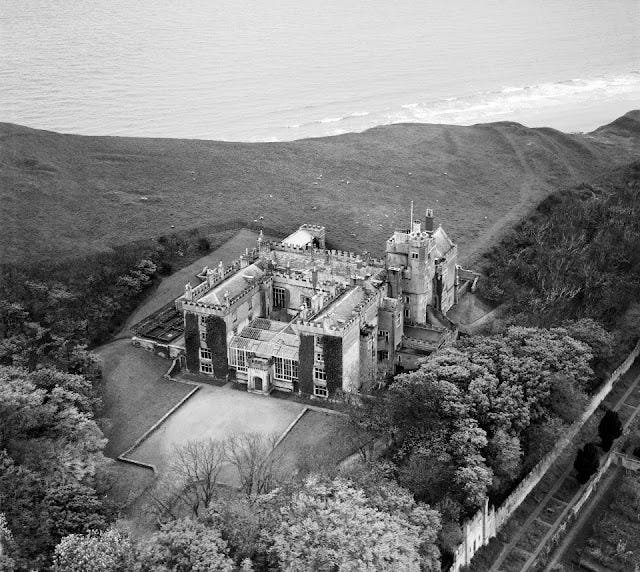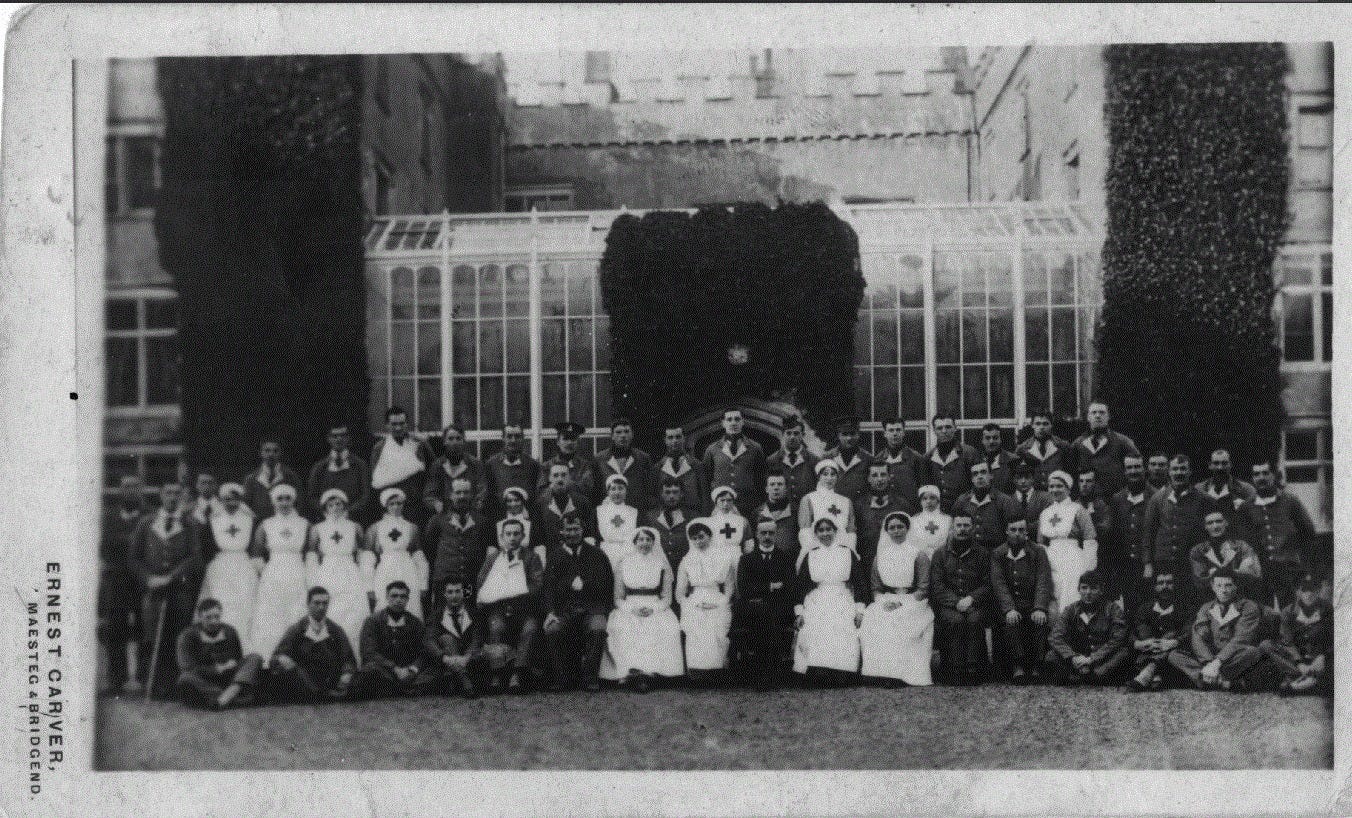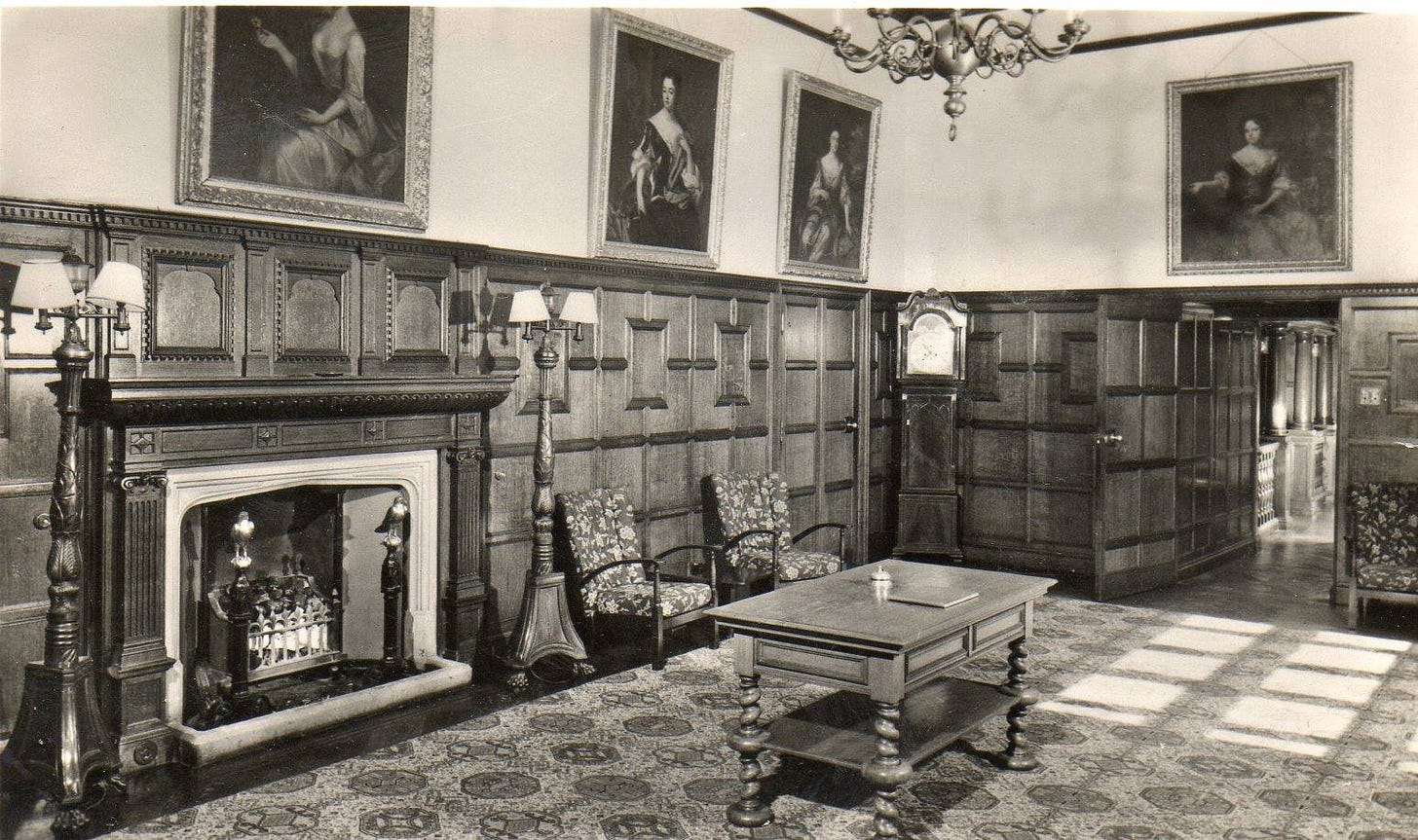The first ‘castle’ at Dunraven is said to have been constructed on the site of an Iron Age Fort and is said to have been a Roman stronghold during the time of Bran, son of Lear.
During the 12th century, the manor Dunraven fell under the Lordship of William de Londres, one of FitzHamon’s infamous ‘Twelve Knights of Glamorgan’. The manor of Dunraven was awarded to Arnold de Boteler after “he bravely defended Ogmore Castle against the attack of the Welsh.”
The Boteler family held the manor of Dunraven from the 12th century until the 15th century when the male line of the Botelers died out. Ann, the daughter of Jane and John Boteler married the notorious ‘Wrecker of Dunraven’ Walter Vaughan. The Vaughan family went on to sell the estate to Humphry Wyndham in 1642.
In 1789, Thomas Wyndham became the MP for Glamorgan and his wife, Caroline was given free rein to re-design the castle. Thomas Wyndham rebuilt Dunraven Castle as a “castellated hunting lodge” on the site of the old castle between 1802 and 1806. The manor house heavily mirrored the Wyndham’s other residence, Clearwell Castle.
Following Thomas Wyndham’s death in 1810, the manor passed to his daughter Caroline Wyndham. She married Windham Henry Quin of Adare Manor in 1814 and in 1815, for political reasons, Windham adopted the name ‘Wyndham-Quinn.’ Windham was MP for Limerick from 1806 until 1820, which meant for the first years of their marriage, both Caroline and Windham lived at their residence in Adare Manor. (There will be a blog-post about Caroline shortly!)
Caroline became a widow in 1850 and on her semi-permanent return to Wales, she began remodeling the manor house. She replaced the inner tower with a conservatory and enlarged two of the wings.
Following her death, Dunraven Castle was inherited by Edwin Wyndham-Quinn and his wife Augusta. Following in his ancestor’s footsteps, Edwin was MP for Glamorgan from 1837 until 1851.
Dunraven Castle continued to pass down through the descendants of the Wyndham-Quinn family and during its long life, the castle saw many alterations and changes of use. For example: During both the First and Second World Wars, the castle was used as a Red Cross Military Hospital.
During the last years of its life, the castle was used as a Workers Travel Association Guest House. The property and grounds were rented and run by the W.T.A from the 6th Earl of Dunraven and were managed by Mr & Mrs Anderson.
In 1960 The Workers Travel Association decided against renewing the lease for the manor house due to rising costs of running the guest house.
It was decided by the owners that the property should be sold. Glamorgan County Council was approached but saw no use for the building. Several parties expressed an interest in the property and the interest of developing it into a caravan site.
In February of 1961, a public inquiry was set up to hear arguments for and against the development of Dunraven Castle.
The plan was to house 800 caravans on the Dunraven Estate and turn the Castle into an amenities block. Glamorgan County Council and local residents refused the plans for this to go ahead.
The Dunraven family decided to sell the property to a consortium that stripped everything of value and held a public auction.
Luckily for my grandparents, who worked at the castle, the staff were given “first dibs” and a lot of the furniture in their home came from the castle. The bell you see in the photograph below now sits on the table in my grandparent’s home!
The consortium dismantled and bulldozed the castle into the tennis courts, and gardens and sold some of the stone to local quarries.







